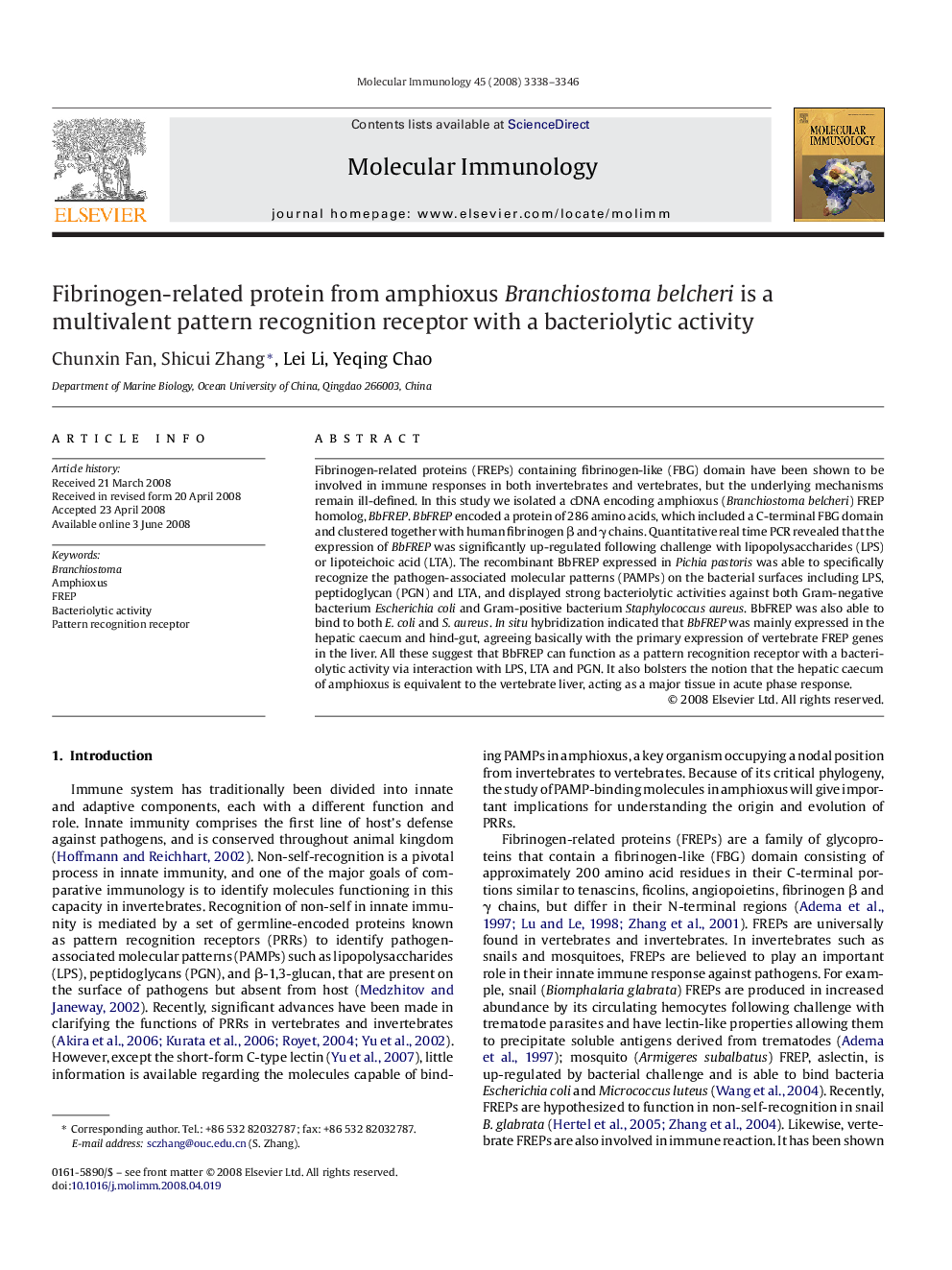| Article ID | Journal | Published Year | Pages | File Type |
|---|---|---|---|---|
| 2832263 | Molecular Immunology | 2008 | 9 Pages |
Fibrinogen-related proteins (FREPs) containing fibrinogen-like (FBG) domain have been shown to be involved in immune responses in both invertebrates and vertebrates, but the underlying mechanisms remain ill-defined. In this study we isolated a cDNA encoding amphioxus (Branchiostoma belcheri) FREP homolog, BbFREP. BbFREP encoded a protein of 286 amino acids, which included a C-terminal FBG domain and clustered together with human fibrinogen β and γ chains. Quantitative real time PCR revealed that the expression of BbFREP was significantly up-regulated following challenge with lipopolysaccharides (LPS) or lipoteichoic acid (LTA). The recombinant BbFREP expressed in Pichia pastoris was able to specifically recognize the pathogen-associated molecular patterns (PAMPs) on the bacterial surfaces including LPS, peptidoglycan (PGN) and LTA, and displayed strong bacteriolytic activities against both Gram-negative bacterium Escherichia coli and Gram-positive bacterium Staphylococcus aureus. BbFREP was also able to bind to both E. coli and S. aureus. In situ hybridization indicated that BbFREP was mainly expressed in the hepatic caecum and hind-gut, agreeing basically with the primary expression of vertebrate FREP genes in the liver. All these suggest that BbFREP can function as a pattern recognition receptor with a bacteriolytic activity via interaction with LPS, LTA and PGN. It also bolsters the notion that the hepatic caecum of amphioxus is equivalent to the vertebrate liver, acting as a major tissue in acute phase response.
